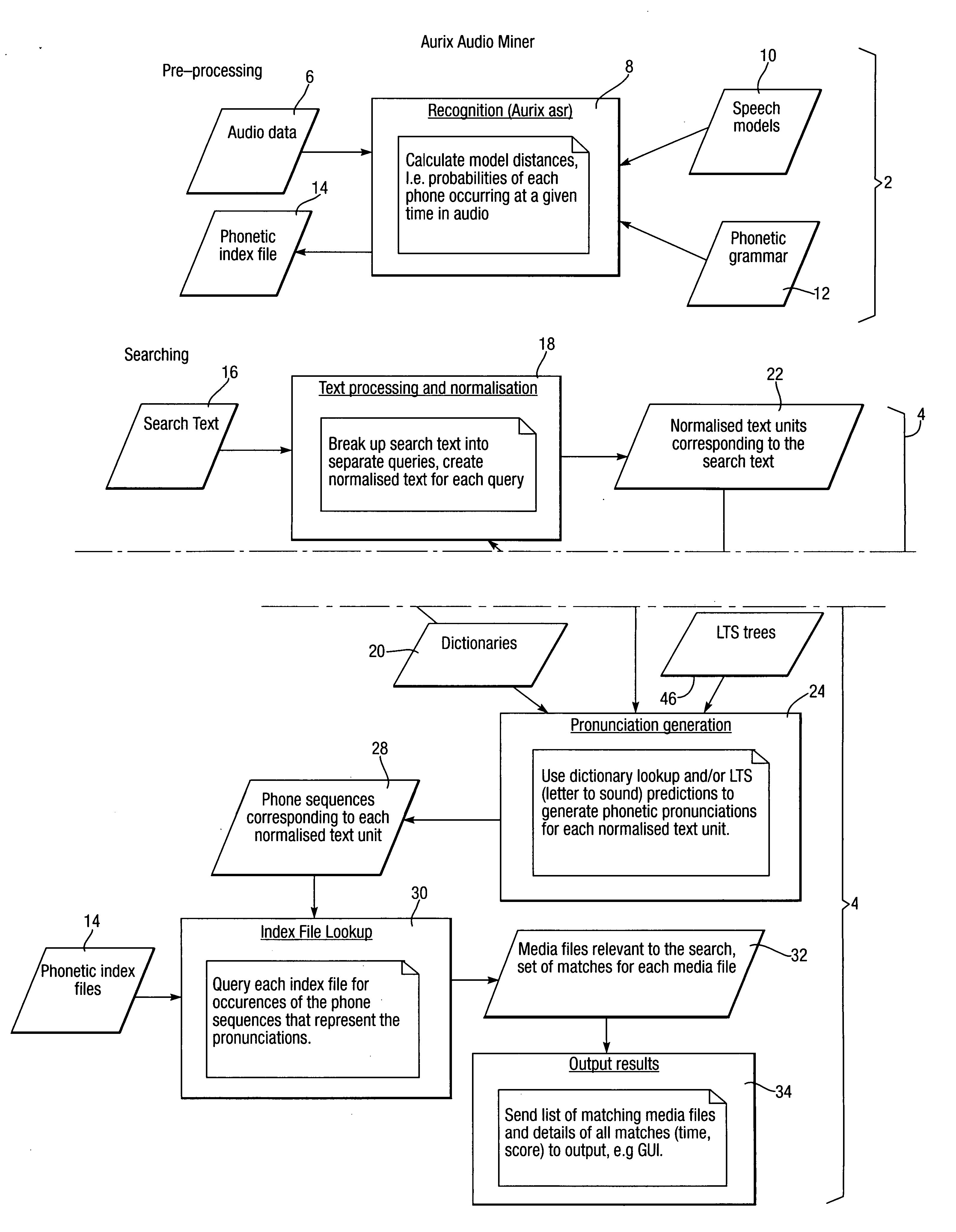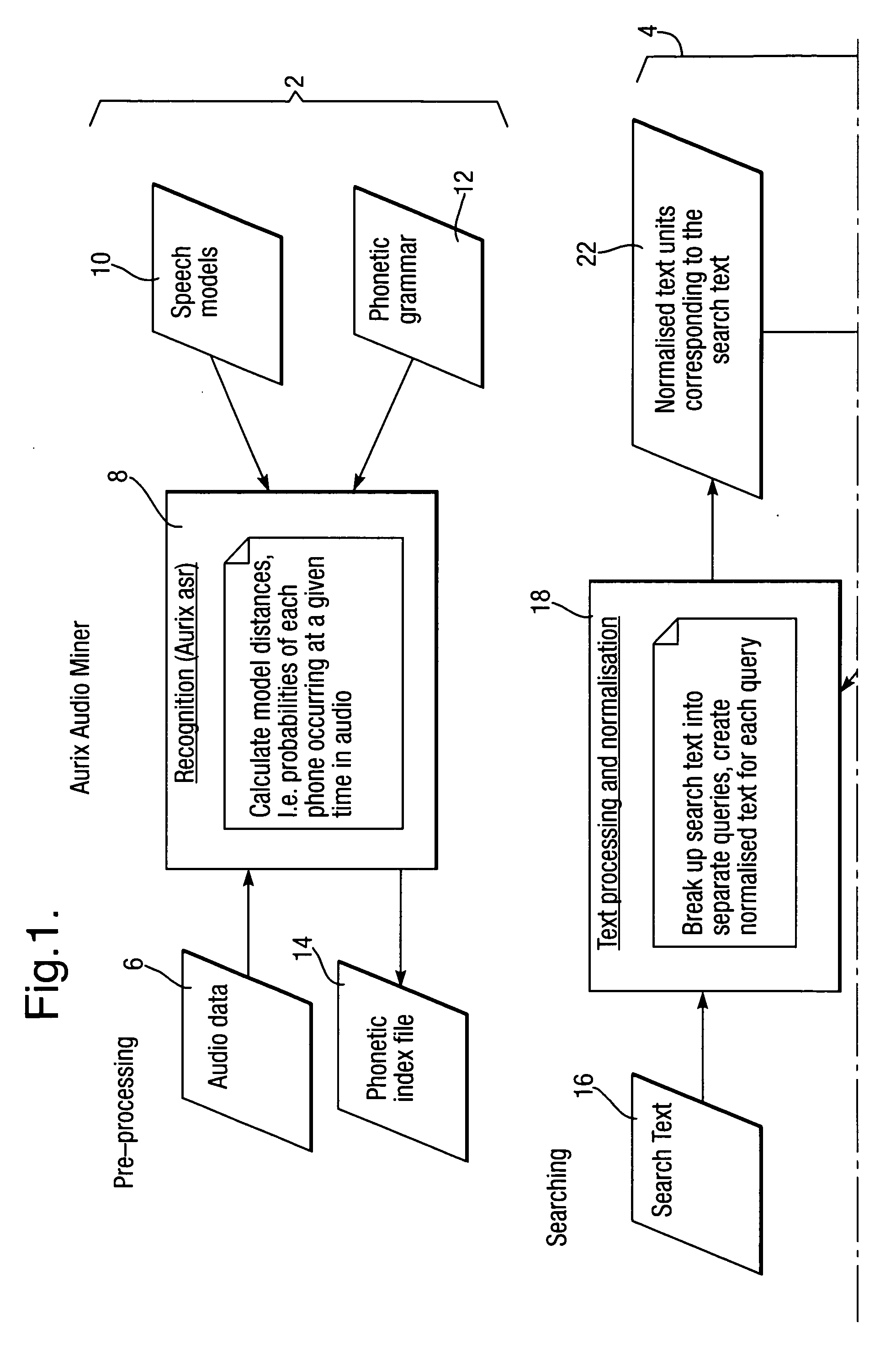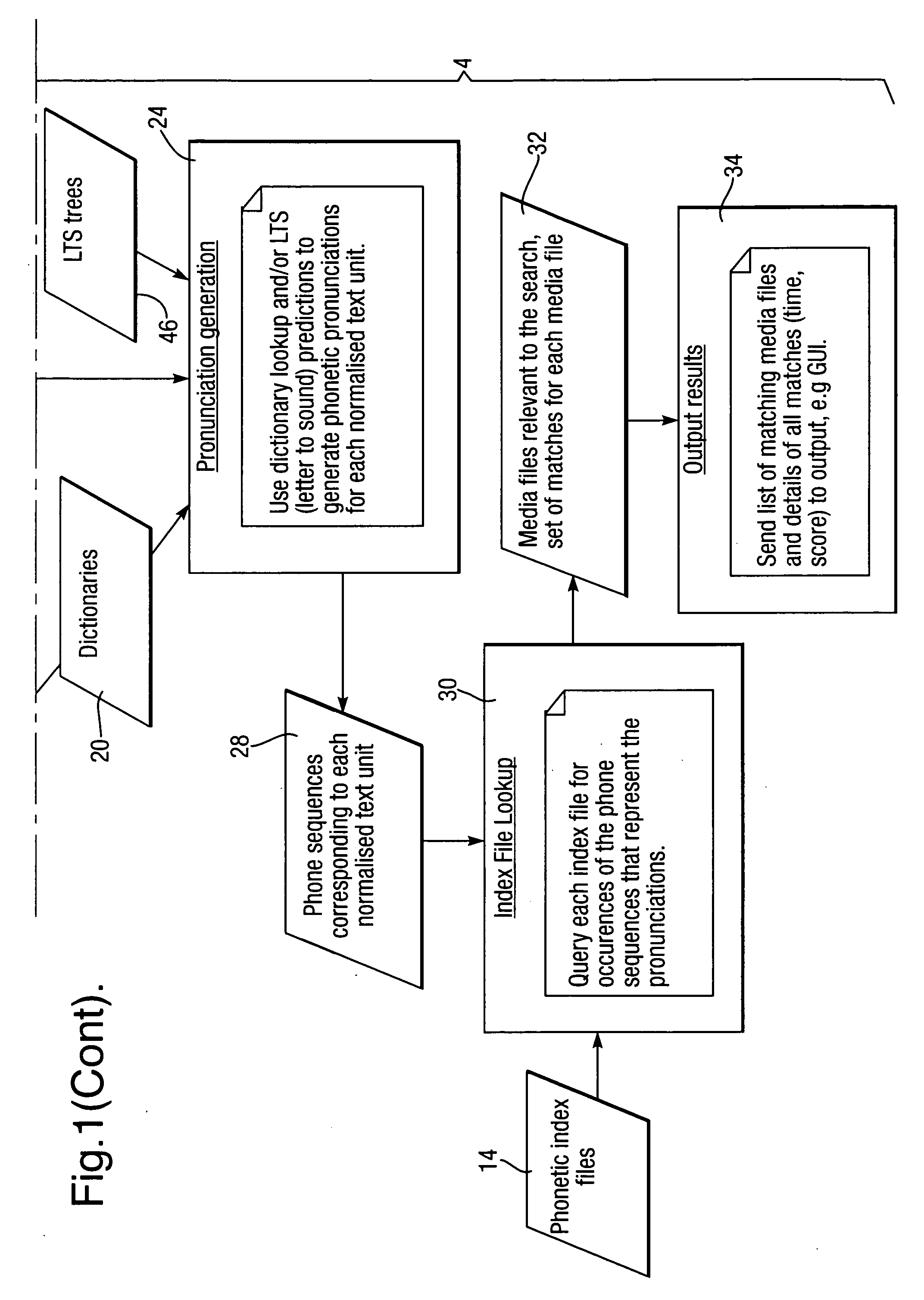Methods and apparatus relating to searching of spoken audio data
- Summary
- Abstract
- Description
- Claims
- Application Information
AI Technical Summary
Benefits of technology
Problems solved by technology
Method used
Image
Examples
Embodiment Construction
[0062] The present invention relates to the processing of audio data containing speech to create phonetic index files to allow for the subsequent searching thereof. The steps involved in processing the data and the searching thereof are illustrated with respect to FIG. 1.
[0063]FIG. 1 illustrates the two distinct stages involved with the present invention, the initial processing stage 2 to generate a phonetic index file for some audio data and the search stage 4 to search for a search term.
[0064] The initial processing stage starts with some audio data 6. The audio data 6 may represent various forms of spoken audio and may be received in various ways. The audio may be being received in real time, for instance as live speech captured by a microphone, as a broadcast over a broadcast medium or as speech over a telephone network etc. or the audio data may be a pre-recorded audio data file. The audio data may be part of an audio-visual file. Usually the audio data will comprise digital ...
PUM
 Login to View More
Login to View More Abstract
Description
Claims
Application Information
 Login to View More
Login to View More - R&D
- Intellectual Property
- Life Sciences
- Materials
- Tech Scout
- Unparalleled Data Quality
- Higher Quality Content
- 60% Fewer Hallucinations
Browse by: Latest US Patents, China's latest patents, Technical Efficacy Thesaurus, Application Domain, Technology Topic, Popular Technical Reports.
© 2025 PatSnap. All rights reserved.Legal|Privacy policy|Modern Slavery Act Transparency Statement|Sitemap|About US| Contact US: help@patsnap.com



